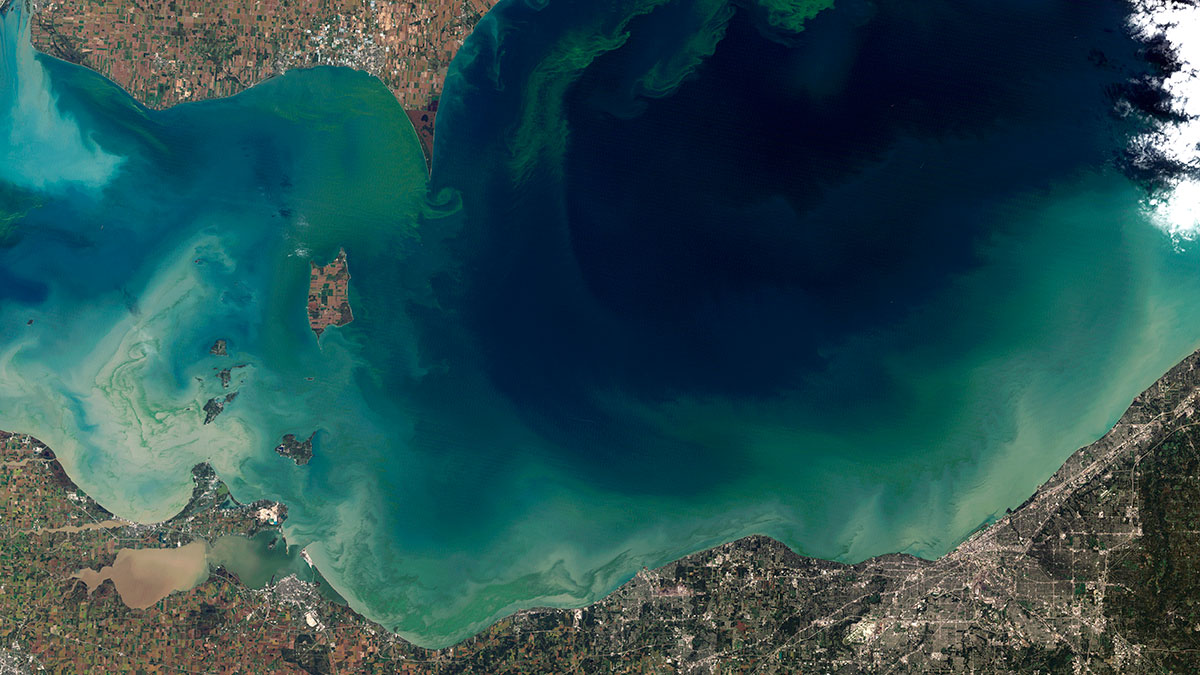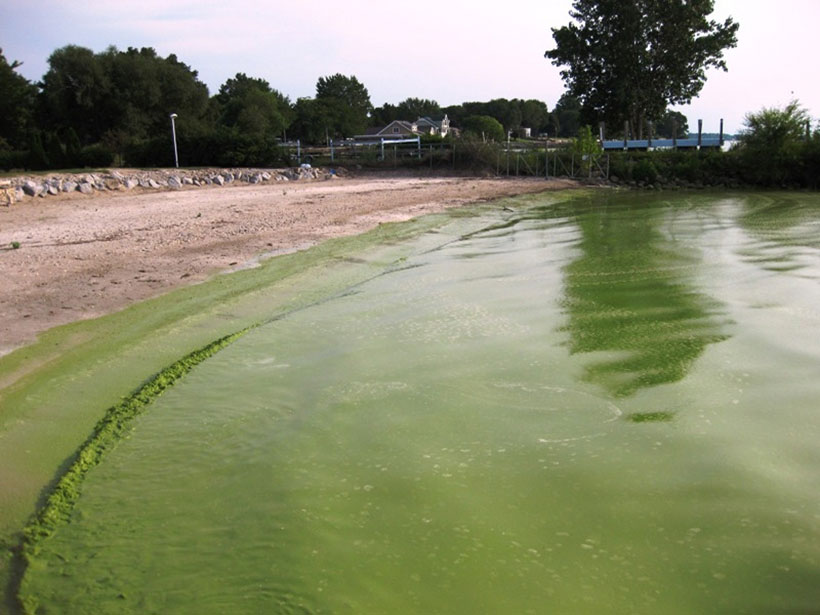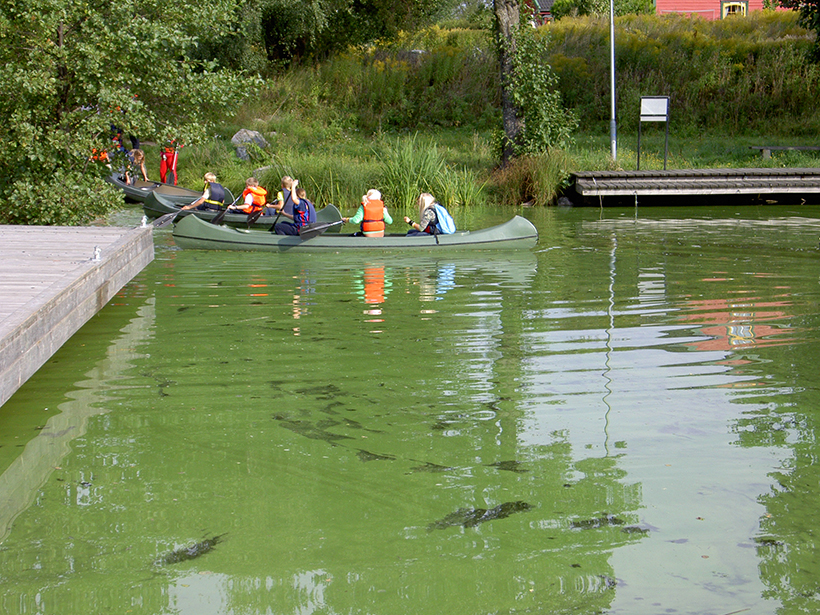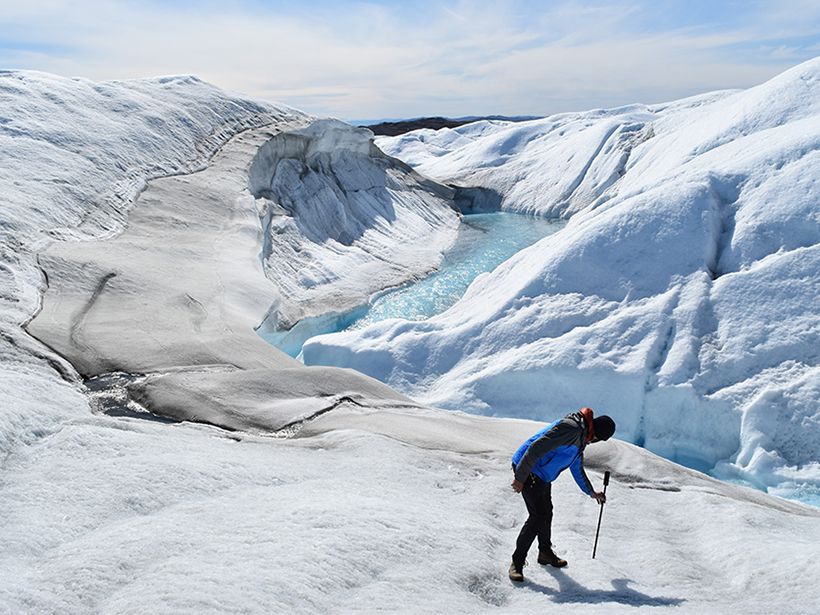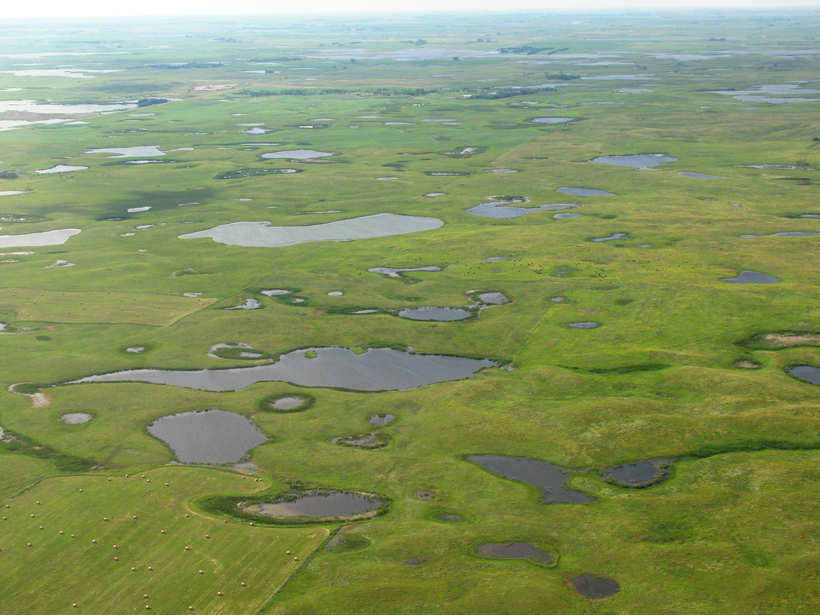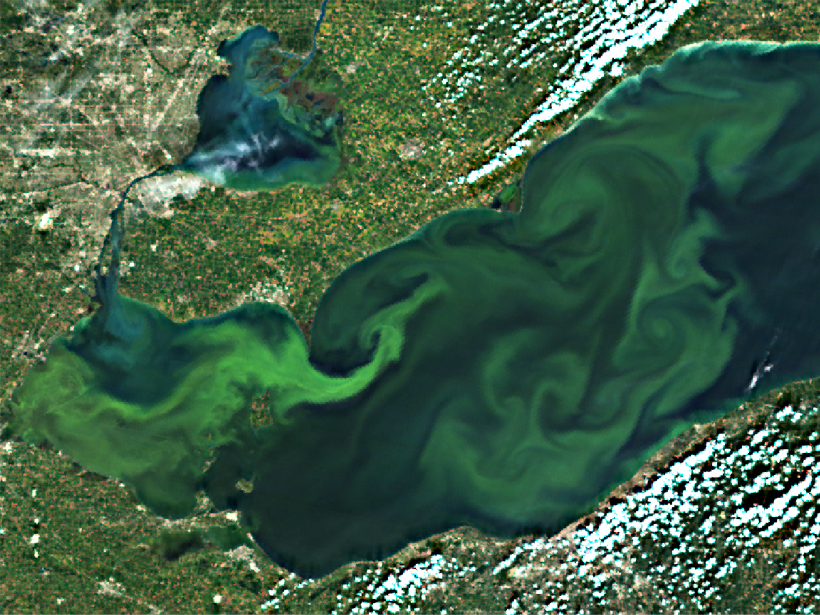Some types of algal blooms produce dangerous toxins, while others are relatively harmless to humans.
harmful algal blooms
Cyanobacteria Blooms Exceed WHO Thresholds in Midwest Lakes
A study of 369 lakes across the Midwest finds that many of them, especially those close to agriculture, have high concentrations of harmful algal bloom-causing cyanobacteria.
Remote Sensing of Algal Blooms Can Improve Health and Save Money
Using satellites to detect cyanobacterial algal blooms can foster faster decision-making that reduces harm to public health as well as associated costs.
Stored Nutrients and Climate Warming Will Feed More Algal Blooms
High nutrient concentrations cause water quality problems in lakes, and as the climate warms, these issues will only get worse. A new model assesses future scenarios and explores solutions.
Toxic Algal Blooms Are Worsening with Climate Change
Researchers use remote sensing technology to carry out a global survey of large freshwater lakes.
Mapping Ice Algal Blooms from Space
Satellite data reveal how colorful algae are melting the Greenland ice sheet.
Small Wetlands Retain Lion’s Share of Nutrients
Still-water ecosystems are key to combating explosive algae growth.
Agencies Collaborate, Develop a Cyanobacteria Assessment Network
An integrated, holistic approach to detecting and characterizing cyanobacteria blooms could reduce human health risks and better direct field resources.
Circulation a Key Factor in Mediterranean Algal Growth
Scientists use satellite and robotic field data to study the environmental conditions driving phytoplankton blooms in the northwestern Mediterranean Sea.

